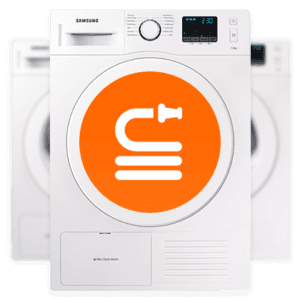Washing machine connections
Of course you want to connect your new washing machine as well as possible, to prevent a leak or blockage. For this you may need extra parts, e.g. a loose drain pipe. To connect a washing machine and dryer you need a Y-drain. A connector allows you to connect two drain hoses together, for example if one drain hose is not long enough. The list below provides everything you may need to install your washer and dryer.
What is the best way to connect a washing machine?
Do you have a new washing machine? Or are you moving? Then you will also need to reconnect your washing machine. In many cases you can do this yourself. Are you in doubt? Then it’s our advice to call a plumber. But here are some tips on how to hook up your washing machine! For this reason, it is best to put your washing machine on a solid surface. Against a wall – preferably in a corner – is often the most stable place for a washing machine. Make sure that there is a grounded outlet, water supply and drain nearby.
1: Choose a good spot
Washing machines can vibrate a lot and therefore make quite a bit of noise. For this reason, you should place your washing machine on a solid surface. Against a wall – preferably in a corner – is often the most stable place for a washing machine. Of course, make sure there is an earthed outlet, water supply and drainage nearby.
2: Remove the shipping bolts
To transport your washing machine, secure the drum with shipping bolts. Make sure you have removed these during installation, and especially before you start running a wash. Otherwise there is a big chance that your washing machine breaks down. Your washer’s manual will tell you where to find the bolts and how to undo them.
3: Connect the washer drain and supply
Next step: connect the water supply hose to the faucet and the washer. The connection of a washing machine is usually at the back, top right. Tighten the hose on both sides and open the faucet to make sure no water leaks out. The hose of the drain is often already attached to the washing machine, put it in the drain. If you want to connect your washer and dryer to the same drain, you will need a y-piece.
4: Plug the power cord into a grounded outlet
Next, plug the power cord into an outlet. To prevent a short circuit, use a grounded outlet. You can identify these by the two metal pins at the top and bottom of the socket. Do you have a pull switch? Leave the installation to an electrician. Pull switches are mandatory for washing machines in the bathroom. Is it somewhere else, e.g. in the kitchen?
5: Level the Washing Machine
Make sure the washing machine is level. This will help it vibrate less and make less noise when spinning.

